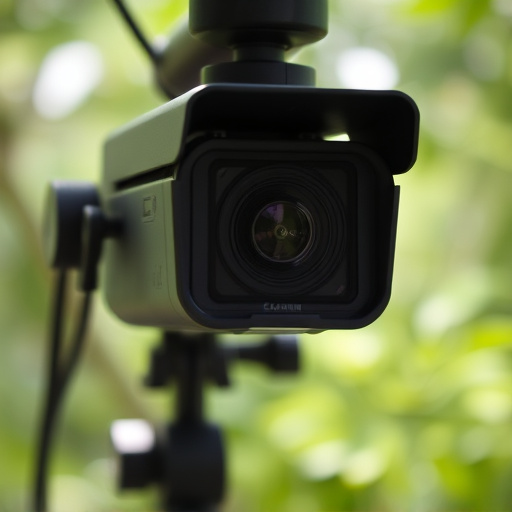Hidden Nanny Cams Night Vision face strict consent rules and legal protections for privacy. Place them discreetly in dark areas, use infrared tech for low-light visibility. Advanced sensors and signal processing detect heat signatures and anomalies. Employ random checks, decoys, noise filters to counter detection. Balancing security and privacy requires understanding local laws, ethical practices to avoid severe repercussions.
In the era of advanced technology, hidden nanny cams equipped with night vision have become ubiquitous. This article delves into the intricate world of covert recording equipment placement and detection, exploring both legal boundaries and practical strategies. We examine discreet camera locations for optimal night vision, analyze advanced detection methods, offer tips to avoid discovery, and discuss ethical considerations in light of growing privacy concerns. Understanding these aspects is crucial for navigating the complexities of hidden nanny cams.
- Understanding Legal Boundaries of Covert Recording
- Choosing Discreet Nanny Cam Locations for Night Vision
- Advanced Technology in Hidden Camera Detection Methods
- Strategies to Avoid Discovering Surreptitiously Placed Devices
- Ethical Considerations and Privacy Rights in Covert Surveillance
Understanding Legal Boundaries of Covert Recording
The legal landscape surrounding covert recording, particularly in private settings like homes or workplaces, varies significantly across jurisdictions. In many places, hidden nanny cams or night vision recording devices are only permissible with explicit consent from all parties involved. Violations of this consent can lead to serious legal repercussions, including charges for invasion of privacy.
It’s crucial to understand the specific laws in your region before deploying any covert recording equipment. Some areas have strict regulations that prohibit the use of hidden cameras without a warrant or reasonable suspicion of illegal activity. Additionally, certain types of recordings, such as those capturing intimate moments, are often given enhanced legal protections. Being aware of these boundaries ensures not only compliance with the law but also maintains ethical standards in surveillance practices.
Choosing Discreet Nanny Cam Locations for Night Vision
When setting up hidden nanny cams for night vision, discretion is key. Placement should prioritize minimal visibility while maximizing clear video capture. Opt for areas that are naturally obscured by furniture or decor, such as behind curtains or inside cabinets. Corners and narrow spaces also offer cover, allowing for unobtrusive monitoring without raising suspicion.
Night vision functionality enhances these hidden nanny cams’ capabilities, enabling continuous surveillance even in low-light conditions. Infrared technology is particularly effective, capturing detailed footage without detection by subjects. Ensure the equipment is positioned at a suitable height to avoid shadowing and maintain clear viewing angles, enhancing overall effectiveness for round-the-clock observation.
Advanced Technology in Hidden Camera Detection Methods
The evolution of technology has brought about advanced tools to detect covert recording equipment, such as hidden nanny cams with night vision capabilities. Modern detection methods leverage sophisticated algorithms and sensor technologies to uncover these clandestine devices. One common approach involves infrared (IR) sensors that can penetrate darkness, identifying heat signatures emitted by electronic components, thus revealing the presence of hidden cameras.
Additionally, advanced signal processing techniques are employed to analyze audio and visual data, looking for unusual patterns or anomalies that might suggest the operation of covert recording devices. These methods prove invaluable in scenarios where regular visual inspections fail to reveal hidden nanny cams, ensuring privacy and security by deterring and detecting such surveillance equipment.
Strategies to Avoid Discovering Surreptitiously Placed Devices
To avoid discovering surreptitiously placed devices like hidden nanny cams with night vision, it’s crucial to approach security from a holistic perspective. One effective strategy is to implement random and irregular checks. Unlike fixed cameras, covert equipment often relies on consistent patterns for detection; breaking these routines can help mask their presence. Regularly changing furniture layouts or even staff positions can serve as decoys, distracting potential intruders from targeted devices.
Additionally, utilizing high-quality noise and interference filters is a clever way to evade suspicion. Many hidden cameras use infrared night vision, which can be identified by unusual light patterns or flickering screens. Advanced noise cancellation technology ensures that any accompanying sounds are masked, making it harder for the average person to detect these devices. By combining these tactics, organizations can significantly enhance their security posture against covert recording equipment.
Ethical Considerations and Privacy Rights in Covert Surveillance
The use of covert recording equipment, such as hidden nanny cams equipped with night vision capabilities, raises significant ethical and legal questions surrounding privacy rights. While these devices can provide valuable evidence in various situations, their implementation must adhere to strict guidelines to ensure individual freedoms are not infringed upon. Unethical placement or unauthorized usage of such surveillance tools can lead to severe consequences, including the erosion of trust and potential legal repercussions.
Privacy is a fundamental human right, and citizens must be made aware of any ongoing monitoring, especially in public spaces. In many jurisdictions, there are strict laws governing the use of hidden cameras, particularly in residential areas or where sensitive information might be disclosed. It’s crucial for both individuals and organizations employing covert recording devices to understand these regulations to maintain a balance between security needs and personal privacy protections.
Covert recording, especially with hidden nanny cams equipped with night vision technology, raises complex legal and ethical questions. While these devices can offer peace of mind, it’s crucial to navigate the fine line between protection and privacy rights. Understanding the legal boundaries, choosing discreet placement locations, and employing advanced detection methods are essential strategies for responsible use. By adhering to ethical considerations, users can ensure the integrity of their surveillance systems without infringing on others’ privacy.
